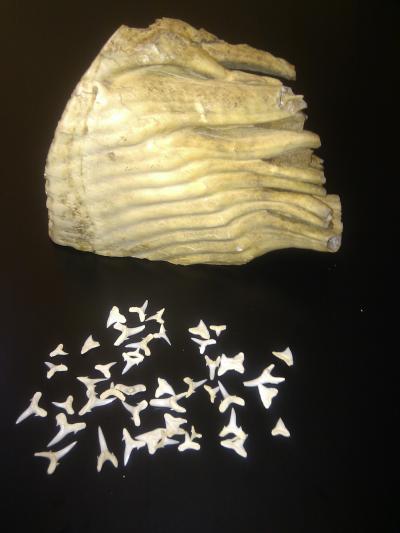We're open daily! View holiday hours
Science News
Dinosaur Body Temperatures
May 25, 2010

When a scientist is quoted describing his research as “This is not quite like going back in time and sticking a thermometer up a creature's back end, but it's close,” how can you resist writing about it?
The scientist is John Eiler, PhD, professor of geology and geochemistry at Caltech and one of the authors of a study published yesterday in the Proceedings of the National Academy of Sciences.
The creatures he’s talking about? Dinosaurs.
Using the teeth of current, living creatures like sharks and elephants, Eiler and his colleagues were able to accurately measure the animals’ body temperatures. Now the scientists hope to do the same with dinosaur and early bird fossils.
“We're looking at eggshells and teeth to see whether the most conspicuous dinosaur species were warm- or cold-blooded,” says Eiler.
To do this, the Caltech team developed a technique to measure body temperature by looking at the concentrations of two rare isotopes—carbon-13 and oxygen-18 in both teeth and eggshells. “These heavy isotopes like to bond, or clump together, and this clumping effect is dependent on temperature,” says postdoctoral scholar Robert Eagle, the paper's first author. “At very hot temperatures, you get a more random distribution of these isotopes, less clumping. At low temperatures, you find more clumping.” Voilà! Warm-blooded or cold-blooded creatures.
In addition to predicting animals’ body temperatures, the researchers would like to apply their approach to better understand some key evolutionary transitions.
“Take birds, for instance,” Eiler says. “Were they warm-blooded before or after they started to fly? Before or after they developed feathers? We want to take small birds and track their body temperature through time to see what we can learn.”
Finally, they hope to get a peek at the paleoclimate, through body-temperature data derived from ancient cold-blooded animals. “With this method, we can track changes in body temperature as a proxy for changes in air or water temperature.”
Time machine and creature’s rear end not needed.
Image courtesy of Caltech/Robert Eagle